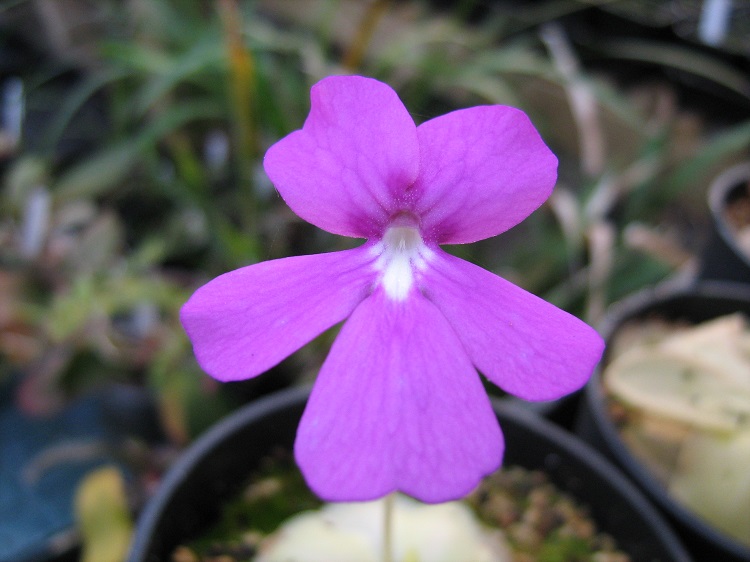The original description (IPSG Newsletter) says:
"The leaf rosettes of both forms (two different clones of the same parentage considered as one cultivar) are relatively similar, except in size.
It is therefore very natural to call one "grande forme" (sic!) (large form) and the other one, wouldn't you have guessed? "petite forme" (sic!) (small form).
The heritage from both parents is straightforward. While the summer rosettes are the exact copy of those of Pinguicula ' Sethos ' Hort.Slack, the winter rosettes are very compact like Pinguicula ' Huahuapan ' Hort.Slack.
The plants bloom without any surprise at the end of winter. In early blooming stages they have a striking resemblance to the picture by Adrian Slack in his book "Indect Eating Plants", page 110 ( Pinguicula ' Huahuapan ' Hort.Slack).
Any similarity disappears when the blooms open. Though the flowers of Pinguicula ' L'Hautil ' L.Legendre & S.Lavayssiere 'Petite Forme' (sic!)
resemble the ones of Pinguicula ' Sethos ' Hort.Slack, the flowers of 'Grande Forme' (sic!) consist of very large petals, partially overlapping.
In both cases, the petals are slightly undulating, a heritage of Pinguicula ' Huahuapan ' Hort.Slack. The flowers of both forms display identical sets of colours.
Their central core is light green. It gives rise to a white spot of 5 by 2 mm on the lower central petal.
The central region of the base of both lateral lower petals is marked by two central white lines, 3-4 mm long, which are framed by dark violet lines.
The rest of the petals are of a lighter, but still profound, violet colouration. The upper petals are characterised by the same violet tint, though they lack the white spots.
The spur, 3 cm long, is almost straight, bending only slightly towards the floor. Tn the case of 'Grande forme', the flower is 3 cm high as well as wide.
In 'Petite Forme' it is only 2 cm high and slightly less in width. Both forms bloom generously so that one can expect 2-4 consecutive flowers each year.
Since both hybrids divide vegetatively while blooming, beautiful specimens having large floral displays can easily be obtained within a few years."
|












